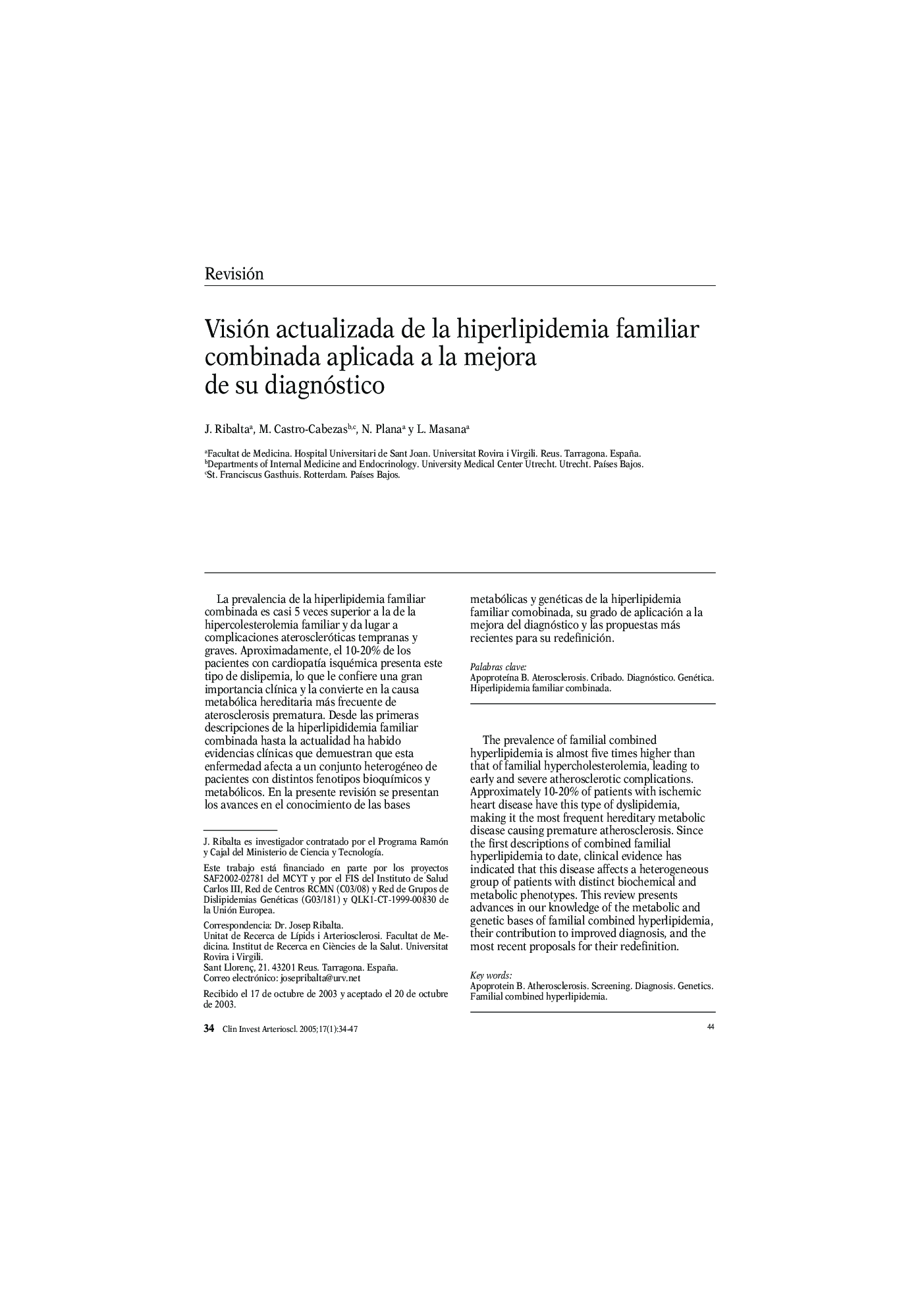| Article ID | Journal | Published Year | Pages | File Type |
|---|---|---|---|---|
| 9146749 | Clínica e Investigación en Arteriosclerosis | 2005 | 14 Pages |
Abstract
The prevalence of familial combined hyperlipidemia is almost five times higher than that of familial hypercholesterolemia, leading to early and severe atherosclerotic complications. Approximately 10-20% of patients with ischemic heart disease have this type of dyslipidemia, making it the most frequent hereditary metabolic disease causing premature atherosclerosis. Since the first descriptions of combined familial hyperlipidemia to date, clinical evidence has indicated that this disease affects a heterogeneous group of patients with distinct biochemical and metabolic phenotypes. This review presents advances in our knowledge of the metabolic and genetic bases of familial combined hyperlipidemia, their contribution to improved diagnosis, and the most recent proposals for their redefinition.
Keywords
Related Topics
Life Sciences
Biochemistry, Genetics and Molecular Biology
Physiology
Authors
J. Ribalta, M. Castro-Cabezas, N. Plana, L. Masana,
